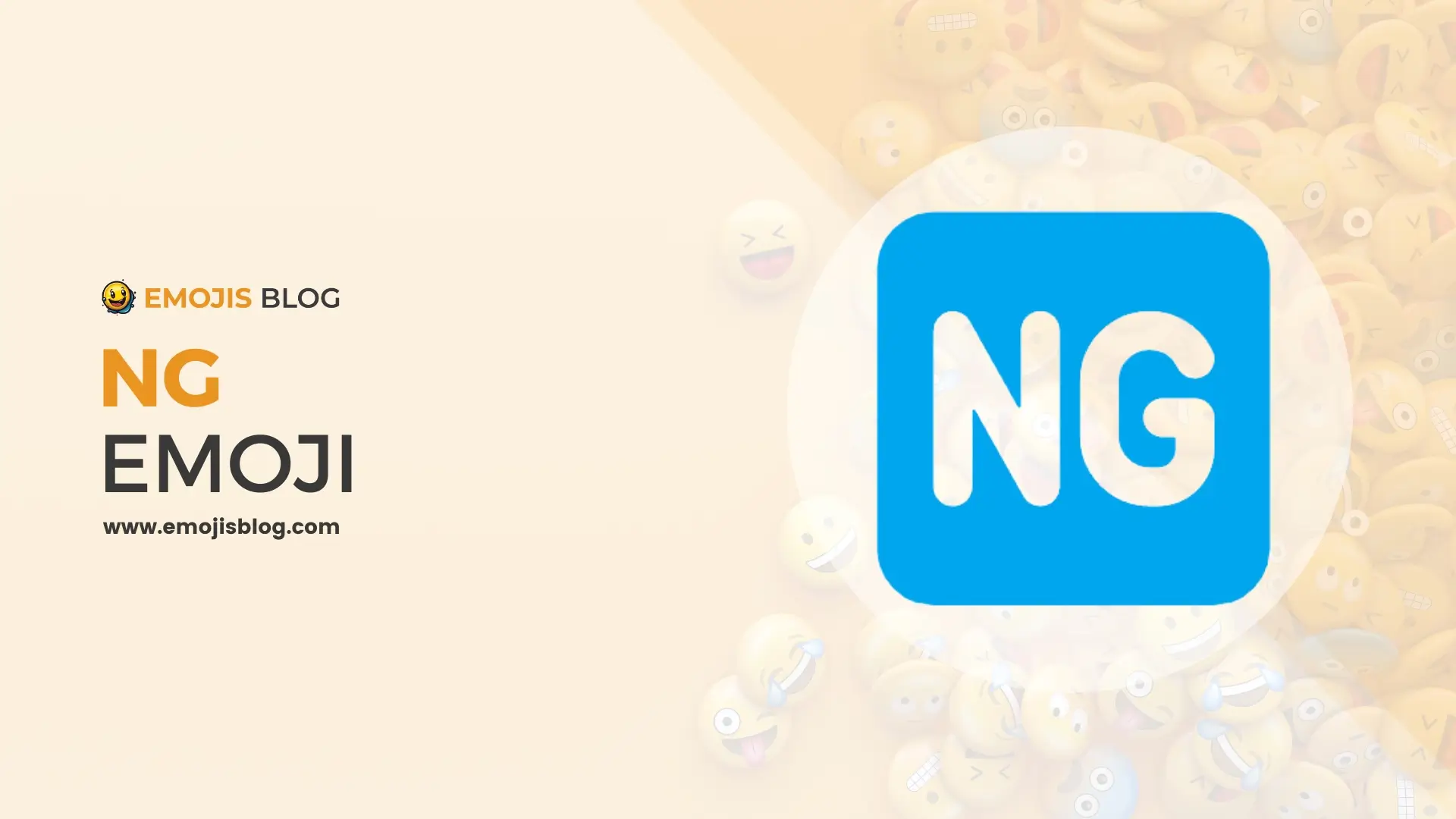What Does The NG Emoji Mean 🆖
🆖
What’s an NG Emoji?
The 🆖 emoji, a symbol comprising the letters ‘N’ and ‘G’ within a square with a red border, represents the phrase “No Good.” Originating from the Unicode Standard, it is widely used in digital communication to express disapproval, rejection, or the idea that something is unsatisfactory or unacceptable. Its usage varies across different cultures, with notable significance in Japanese media where it denotes a failed take or scene. This emoji encapsulates a concise, visually impactful way of conveying a negative assessment or the concept of failure in various contexts, ranging from casual conversations to professional feedback.
Technical Information
| Attribute | Details |
|---|---|
| Emoji | 🆖 |
| Unicode Version | Unicode 6.0 |
| Release Date | October 2010 |
| Category | Symbols |
| Subcategory | Alphanumeric Symbols |
| Code Point(s) | U+1F196 |
| Shortcode(s) | :ng: (on some platforms) |
| Description | Represents “No Good” |
| HTML Entity | 🆖 |
| CSS Code | \1F196 |
| URL Escape Code | %F0%9F%86%96 |
| Annotations | NG, no good, negative |
| Bidirectional Class | Other Neutral (ON) |
| Character Mapping/Cross-Platform Compatibility | Varies by platform (e.g., Apple, Google, Twitter, Facebook) |
Understanding the 🆖 Emoji: A Comprehensive Guide
In the ever-evolving world of digital communication, emojis have become a universal language, transcending cultural and linguistic barriers. Among these, the 🆖 emoji often piques curiosity due to its unique appearance and less obvious meaning. This article delves into the origins, usage, and cultural significance of the 🆖 emoji.
Origins and Meaning
Historical Background
The 🆖 emoji is part of the Unicode Standard, which is a global system for text and emoji encoding. It was introduced in Unicode 6.0, which was released in October 2010. This inclusion was part of a broader effort to standardize various symbols used in electronic communication.
Decoding 🆖
At its core, 🆖 is a combination of two elements: the letter ‘N’ and the letter ‘G’. These letters are enclosed within a square with a bold, red border. The emoji is a representation of the phrase “No Good,” which is often abbreviated as NG. In essence, it is used to denote something that is unacceptable or a failure.
Usage in Digital Communication
Contextual Applications
The 🆖 emoji is versatile in digital conversations. It is commonly used to express disapproval or to indicate that something doesn’t meet a certain standard. For example, if someone proposes an idea in a group chat, another person might reply with 🆖 to suggest that the idea isn’t viable.
Cultural Variations
In Japanese media, “NG” is a popular term used during TV shows or movie productions, signifying a “no good” take or scene. Therefore, in Japan, the 🆖 emoji is frequently used in contexts related to media production. However, its usage has transcended these boundaries and is now used in various global contexts.
Symbolism and Cultural Impact
Beyond Text: Emoji as Cultural Symbols
Emojis like 🆖 are not just digital icons; they represent a new form of language that conveys emotion, opinion, and ideas. The 🆖 emoji, in particular, embodies the concept of disapproval or failure in a concise, visually engaging manner.
The Emoji in Social Media and Marketing
In social media, the 🆖 emoji is often used for comedic or dramatic effect. Marketers also use it in promotional materials to create a sense of urgency or to highlight the drawbacks of not using a particular product or service.
Conclusion
The 🆖 emoji is a fascinating example of how simple symbols can acquire complex meanings and uses in our digital age. From expressing disapproval to being used in marketing strategies, this emoji demonstrates the evolving nature of communication in the 21st century. As we continue to embrace digital forms of expression, the role of emojis like 🆖 will undoubtedly become even more significant in conveying our thoughts and emotions.

